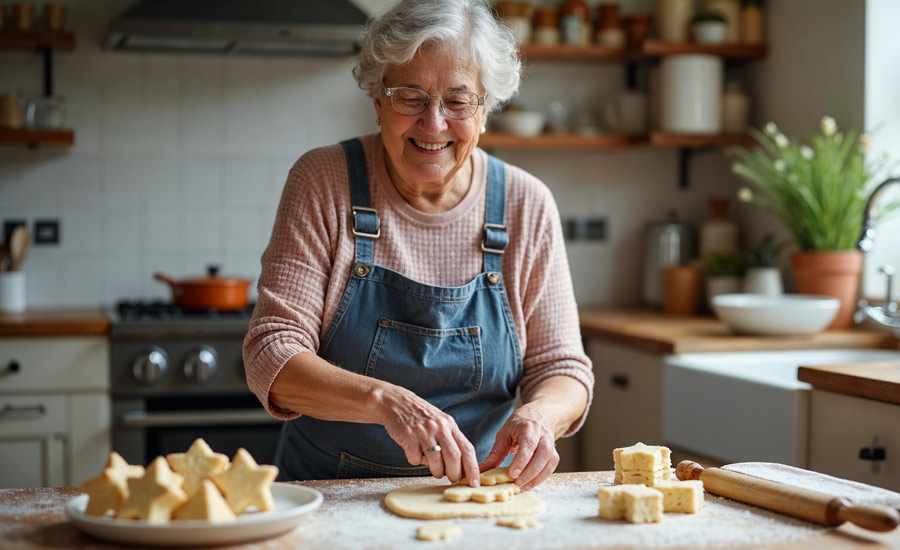The Secret to Encouraging Independence in Residential Care Homes

When people think of care homes, independence probably isn’t the first word that comes to mind. That’s a fair conclusion – but it’s also outdated.
Residential care looks very different these days from what most people imagine.
But, how do care homes actually encourage independence? And what does that look like in real life?
How do Care Homes Encourage Independence Among Residents?
Care homes encourage independence by involving residents in everyday decisions, offering support only where it’s genuinely needed and creating a space that helps, not hinders, daily routines. From flexible mealtimes to personalised care plans and access to meaningful activities, it’s all about ensuring older adults remain capable and in control of their lives.
A Small Shift That Changes Everything
There’s a difference between looking after someone and taking over.
That’s the key.
In the past, care meant doing everything for someone because that felt safer, easier and quicker. But doing too much can quietly chip away at a person’s confidence, especially later in life. The more you step in, the more residents start to feel like they can’t manage without help.
Modern care homes approach things differently, prioritising what a resident needs as well as what they can still do. Sometimes, that’s as simple as letting someone set their own pace or asking how they’d like something done instead of assuming. These moments of choice and control might seem insignificant, but they really do matter.
Care staff won’t push residents to be more independent than they’re comfortable with. It’s about creating the conditions for independence to exist – without pressure.
Independence in Care Homes Matters More Than You Think
Resident independence has a real impact on how they feel and function, day to day.
Here’s what it helps with:
Confidence
When older adults are encouraged to do what they can, they’re more likely to believe they can. That mindset matters, especially when routines change.
Wellbeing
A sense of control has a knock-on effect, meaning better moods, more energy and less frustration. Feeling useful and involved has been proven to lift mood and support good mental health.
Activity and Engagement
If someone feels part of their own day, including making choices and having input, they’re more likely to stay active and take part. Luckily, most modern care homes provide lots of social opportunities with daily, weekly and monthly activity planners.
Motivation
Did you know that the more someone does, the more they want to do? You may have felt this in your own life. But it matters greatly in care settings and independence often fuels itself but it needs the right environment to get started.
Identity
Independence helps residents stay connected to who they are and not feel reduced to a body that needs help to survive. It keeps personality and preferences front and centre.
Balance
Too much help, even with good intentions, can lead to doing less. Encouraging independence keeps support useful – not overbearing.
What Independence for Care Home Residents Looks Like
You don’t need to look hard to spot the difference in a care home that encourages independence. It’s there in everyday routines.
Here’s what that actually looks like:
Residents choose how they spend their time
If someone’s always had a slow morning before moving, then that shouldn’t change just because they’re in a care home. Your loved one gets to decide when to get up, what to wear and how they want to start their day.
Support is offered but never assumed
Trained staff ask before stepping in. It’s a simple, respectful habit that keeps residents involved in their own care.
Habits and routines are respected
It could be reading the paper with breakfast or tending to a few plants. Familiar routines help people feel like themselves and care homes that value independence make space for that.
Spaces are created to be used
Things like clear visible signs, accessible layouts and open communal areas make it easier for residents to move about without always needing assistance.
Custom care
One resident might love group activities, while another prefers quiet time. The right kind of support flexes around that rather than pushing a one-size-fits-all schedule.
Staff know when to pause
Sometimes, the best support is giving someone the time to try first and only stepping in if they ask. Trained care staff give residents a safe space to try and maybe even struggle a little (if they want to), can keep confidence alive.
What Families Can Do to Help
As a family member, your role matters. But as mentioned earlier, encouraging independence doesn’t always mean doing more. Often, it means doing things differently.
It’s easy to want to help or speed things along, especially if something takes a little longer these days. But giving your relative time and space to do things at their own pace can quietly build confidence. It’s also worth holding back from jumping in to fix things straight away – pausing, waiting and letting them figure something out sends the message that you still believe they can.
Keeping a sense of routine also helps, including small things, like bringing their favourite snack, phoning at the usual time or chatting about everyday bits of life, lets your loved one stay connected to themselves and what feels familiar.
And instead of focusing only on how they’re being cared for, try asking what they’ve been up to. What they chose for lunch, who they saw and what they enjoyed that week. It’s a kind way to show that their choices still matter and that they’re not just being looked after but still living life.
If you know of something that helps your loved one feel more independent, whether that’s part of a past routine, a personal habit or a particular way of doing things, share it with their care team.
Life is Still Theirs to Live
The goal in residential care is to keep older adults involved in their own lives, whatever that looks like for them.
That means giving support where it’s needed, stepping back when it isn’t and listening all the way through.
When that balance is right, independence doesn’t fade. It grows.
Ready to explore...
